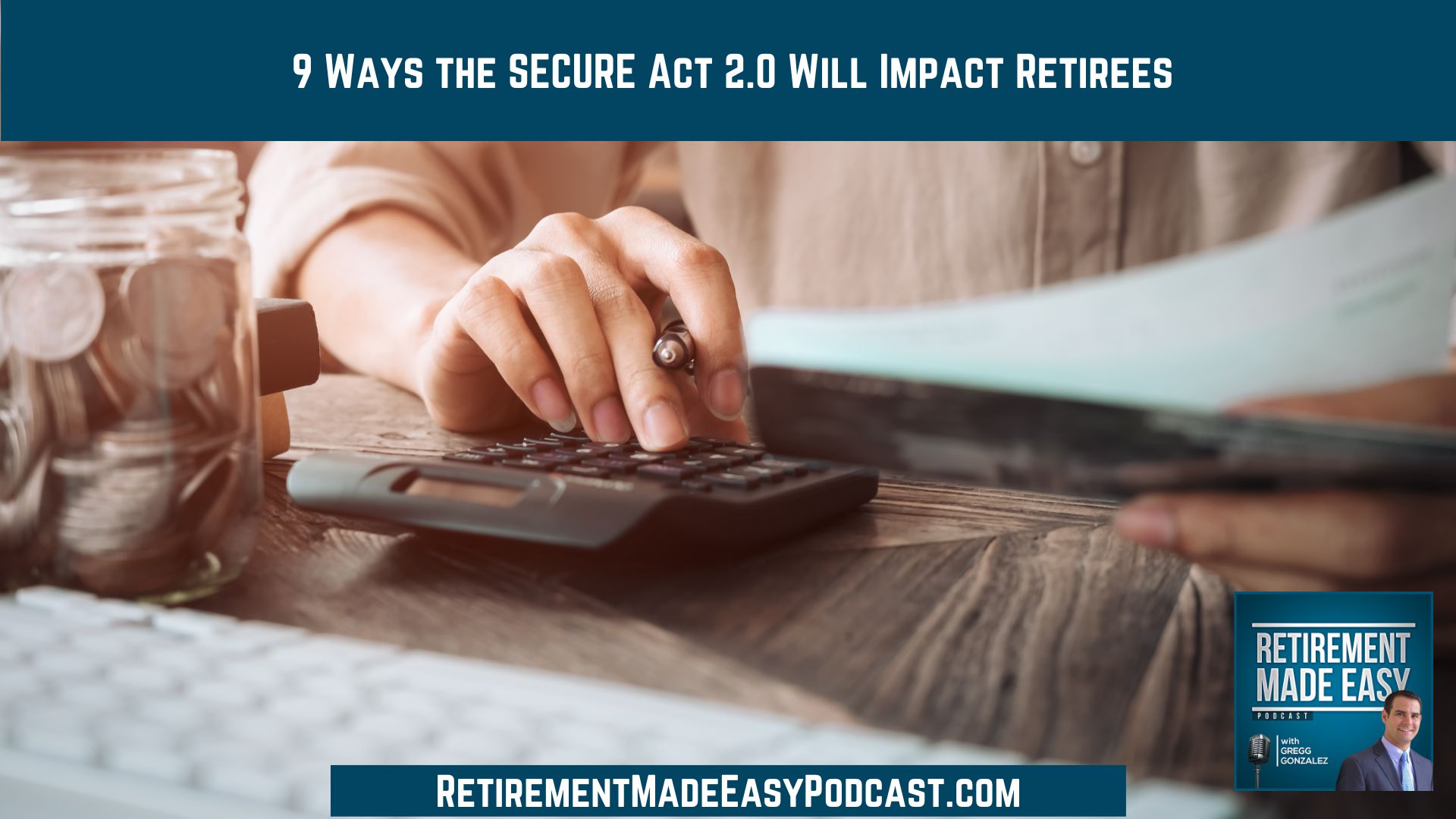
I’ve been talking about this bill for well over six months and it finally passed in December of 2022 as part of a $1.7 trillion-dollar package. So in this episode of Retirement Made Easy, I’ll cover the nine core provisions that are changing and what it means for everyone. There are some changes that I’ve been campaigning for and there are others that just don’t make sense. Many of the provisions don’t start until 2024 or 2025 to give administrators some time to get systems in place. Learn how it will impact you by listening!
You will want to hear this episode if you are interested in…
- [3:21] Get FREE resources at RetirementMadeEasyPodcast.com
- [6:40] Change #1: The required minimum distribution age is changing
- [10:29] Change #2 Required minimum distributions for Roth 401ks are ending
- [12:28] Change #3: Catch-up contributions are increasing
- [17:13] Change #4: Implementing a database for accessing old retirement accounts
- [19:12] Change #5: Automatic enrollment in employer retirement accounts
- [20:07] Change #6: Implementing emergency funds in Roth 401ks
- [21:46] Change #7: Employers can match student loan payments
- [24:34] Change #8: 529 plans can be rolled into Roth IRAs after 15 years
- [26:58] Change #9: Domestic abuse survivors can take penalty-free withdrawals
The required minimum distribution age is changing
The original SECURE Act changed the age you’re required to take required minimum distributions (RMDs) from 70.5 to 72. Now, the SECURE Act 2.0 is changing the age of a RMD from 72 to 73, starting in 2022. In 2033, the new age will be 75. Why? Because they’re extending the life expectancy tables because people are living longer.
Previously, if you forgot to take your RMD, you were penalized 50% of the RMD and you still had to withdraw the money and pay taxes on it. The penalty is now being reduced to 25% (and as low as 10% if corrected in a timely fashion).
SIDE NOTE: I work closely with tax advisors. The IRS doesn’t do a good job of auditing and enforcing the penalties on RMDs. Many people get out of paying that penalty.
Required minimum distributions for Roth 401ks will no longer be required
I’ve been campaigning for this change for years. Starting in 2024, you will no longer be required to take a mandatory distribution from Roth 401ks. Honestly, I’m not sure why someone would leave money in a Roth 401k, because if you roll it over to a Roth IRA, you don’t have to take RMDs. But if you leave it in the Roth 401k, once you turn 72 they make you take withdrawals every year. This change just makes sense. Now, these withdrawals are tax-free, but if you want your money to continue to grow, you can leave it in either account.
Catch-up contributions are increasing
Starting in 2025, catch-up contributions to 401ks will go up. In 2023, for someone over 50, the catch-up contribution is $7,500. With the new provision, individuals 60–63 can contribute an additional contribution of $7,500 annually to their 401k, 403B, etc. But why stop at age 63?
To complicate it further, high-income earners (making over $140,000) can only contribute the additional money to a Roth 401k. Why? Because Congress is in debt. They want high-income earners to pay their taxes now. This is another way of punishing high-income earners.
Starting in 2024, the catch-up number will be indexed to inflation. So if there’s inflation, you can contribute extra per year. What other positive changes are happening? Keep listening.
529 plans can be rolled into Roth IRAs after 15 years
The SECURE Act allowed 529 plans to pay for trade schools in addition to traditional colleges/school options. The act also allowed 529 plans to pay off up to $10,000 of student loan debt. But what if the 529 plan doesn’t get used? What if the child gets scholarships or goes into the military? With the new provision in the SECURE Act 2.0, after the money has been in a 529 plan for 15 years, it can be rolled over into a Roth IRA for the child or grandchild (With a lifetime cap of $35,000).
Listen to the whole episode to learn about other changes, such as implementing emergency funds in Roth 401ks and employers being allowed to match student loan payments (by contributing to their employer-sponsored plans).
Resources & People Mentioned
Connect With Gregg Gonzalez
- Email at: Gregg@RetireSTL.com
- Podcast: https://RetirementMadeEasyPodcast.com
- Website: https://StLouisFinancialAdvisor.com
- Follow Gregg on LinkedIn
- Follow Gregg on Facebook
- Follow Gregg on YouTube



